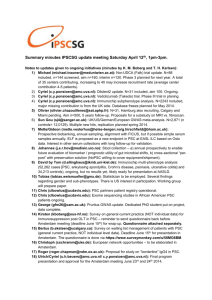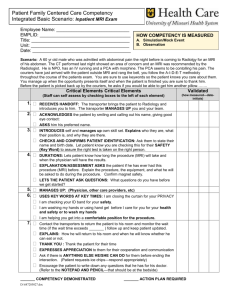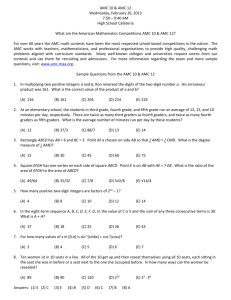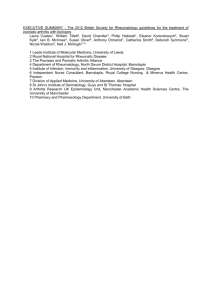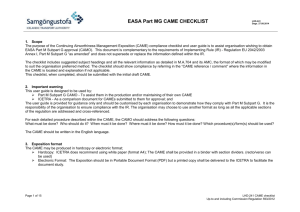Serial Magnetic Resonance Imaging for Monitoring Anti-TNF
advertisement
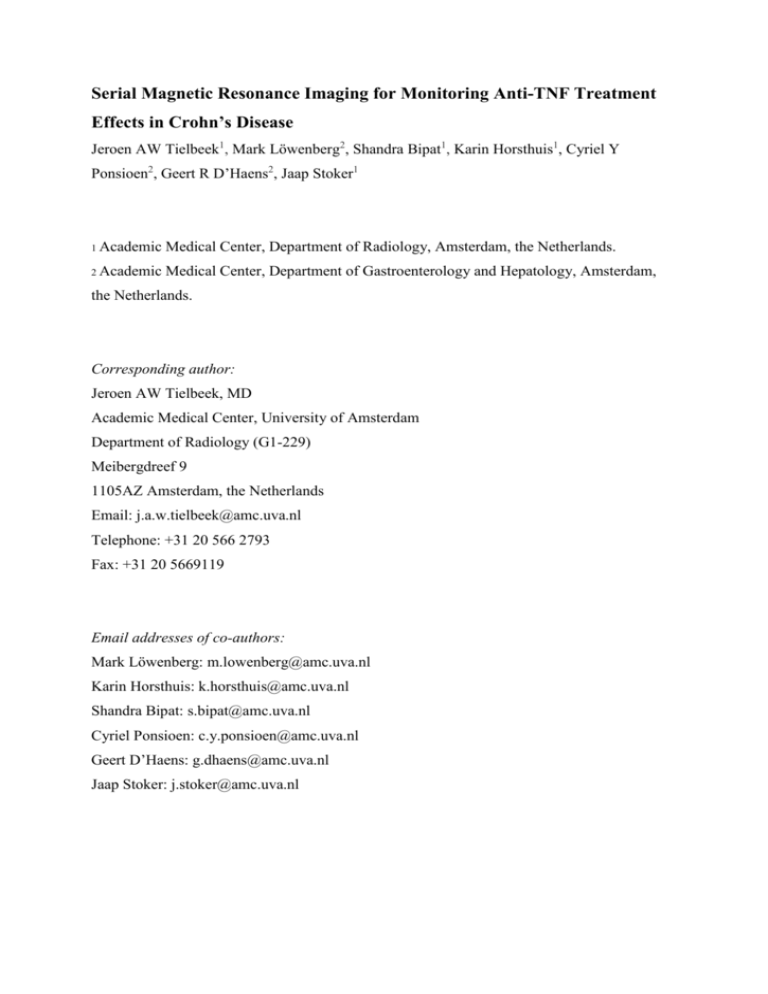
Serial Magnetic Resonance Imaging for Monitoring Anti-TNF Treatment Effects in Crohn’s Disease Jeroen AW Tielbeek1, Mark Löwenberg2, Shandra Bipat1, Karin Horsthuis1, Cyriel Y Ponsioen2, Geert R D’Haens2, Jaap Stoker1 1 Academic Medical Center, Department of Radiology, Amsterdam, the Netherlands. 2 Academic Medical Center, Department of Gastroenterology and Hepatology, Amsterdam, the Netherlands. Corresponding author: Jeroen AW Tielbeek, MD Academic Medical Center, University of Amsterdam Department of Radiology (G1-229) Meibergdreef 9 1105AZ Amsterdam, the Netherlands Email: j.a.w.tielbeek@amc.uva.nl Telephone: +31 20 566 2793 Fax: +31 20 5669119 Email addresses of co-authors: Mark Löwenberg: m.lowenberg@amc.uva.nl Karin Horsthuis: k.horsthuis@amc.uva.nl Shandra Bipat: s.bipat@amc.uva.nl Cyriel Ponsioen: c.y.ponsioen@amc.uva.nl Geert D’Haens: g.dhaens@amc.uva.nl Jaap Stoker: j.stoker@amc.uva.nl ABSTRACT Background Tumor necrosis factor (TNF) antagonists can induce mucosal healing in patients with Crohn’s disease (CD), but the effects on transmural inflammation and stenotic lesions are largely unknown. Aim To assess the evolution of CD inflammation and stenosis in patients treated with anti-TNF agents using serial Magnetic Resonance Imaging (MRI) scans. Methods We performed a retrospective study in 50 patients (54% female, median age 37 years) with CD who had undergone serial MRI examinations while receiving infliximab or adalimumab. Patients were grouped as clinical responders or non-responders based on physician’s assessment, laboratory and endoscopic appearance. MRI scoring was performed by two radiologists in consensus blinded to clinical data using a validated MRI scoring system. In total 64 lesions on MRI were identified for analysis. Analyses were performed using paired ttest and Wilcoxon rank test. Results During anti-TNF treatment, MRI inflammation scores improved in 29 out of 50 patients (45.3%), remained unchanged in 18 out of 50 (28.1%) or deteriorated in 17 out of 50 (26.6%) over time. In the anti-TNF responder group, the mean intestinal inflammation score of all lesions improved from 5.19 to 3.12 (p<0.0001). Mean inflammation scores in stenotic lesions in anti-TNF responders improved also significantly, from 6.33 to 4.58 (p=0.01). In contrast, inflammation scores deteriorated from 5.55 to 5.92 (p=0.49) in non-responders. Conclusions Improved inflammatory activity on serial MRI scans correlated with clinical response to treatment with anti-TNF agents in luminal CD. MRI can be used as a complementary approach to measure transmural inflammation in CD patients and guide the optimal use of TNF antagonists in daily clinical practice.
